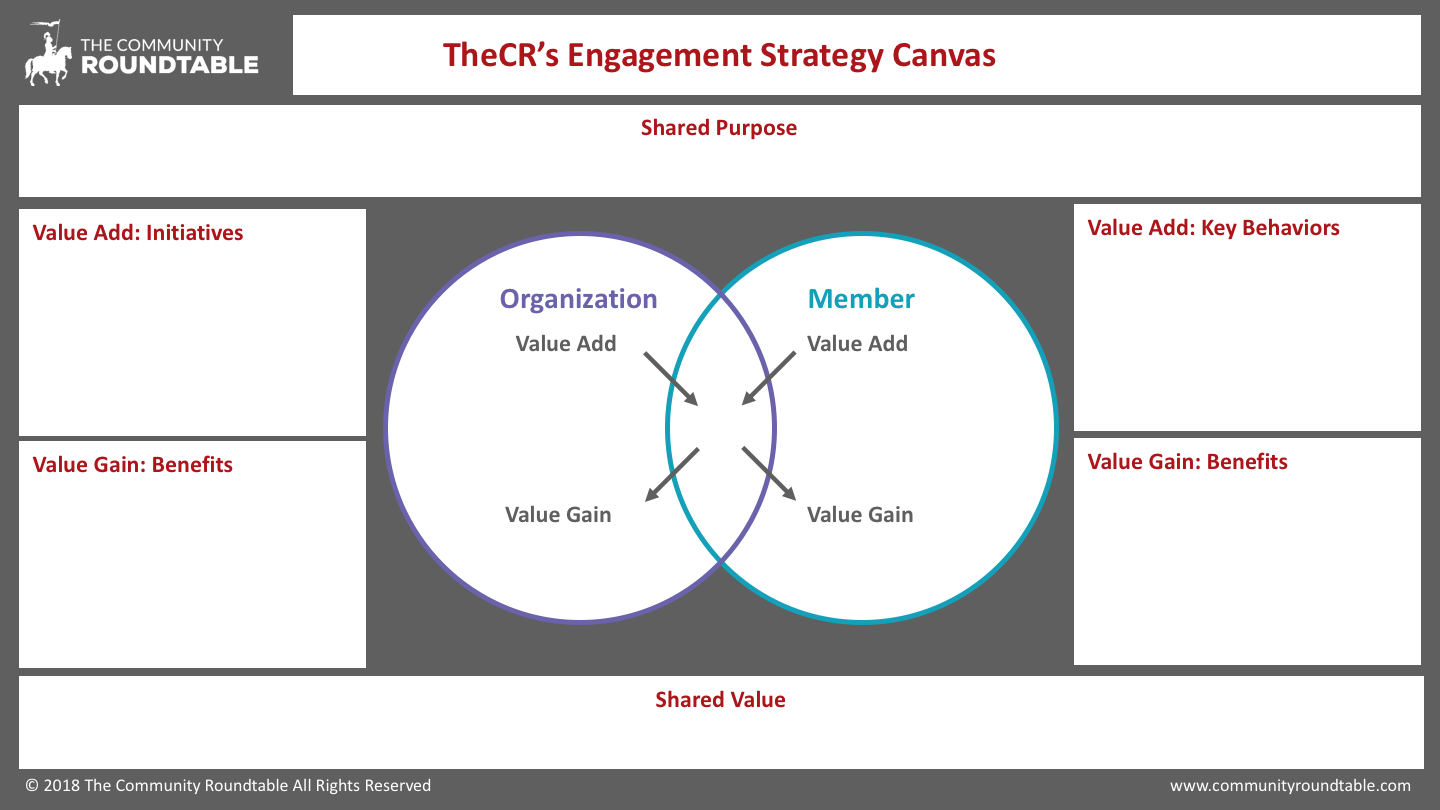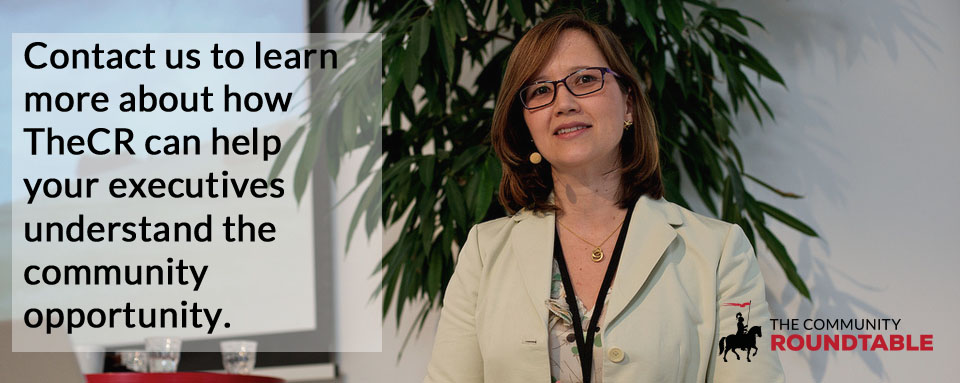Engagement behaviors are a leading indicator of value
Engagement is a key measure of attention, alignment, learning, and leadership. Sustained and deepening engagement is critical for organizations in a digital world where prospects, customers, and employees have endless options and distractions. Organizations that engage well reap huge rewards in attention, conversion, productivity, innovation, and advocacy.
How does an organization inspire, encourage and cultivate engagement?
At The Community Roundtable, we’ve spent almost a decade working with global community leaders to understand engagement and how to successfully increase its breadth and depth.
It starts with a strategy that speaks to the needs of both the organization and its community members. If the strategy is good for the organization but does nothing for the individual, there will be no engagement. If the strategy serves individuals but doesn’t benefit the organization, the efforts to cultivate that engagement will ultimately fail and be disbanded.
TheCR’s Engagement Strategy Canvas
We’ve taken the lessons we have learned about great engagement strategies and distilled them into four important elements:
- Shared Purpose
- Shared Value
- Key Behaviors
- Value Add Inputs and Value Gained Outputs

Great engagement starts with a well-crafted Shared Purpose
Shared Purpose is the compelling vision for what the organization and the community both have a vested interest in addressing. It communicates the mission and overall goals of the community. A well-crafted shared purpose is inspiring and exciting. It communicates the motivation for coming together and acts a community mission statement.
Shared Purpose is not enough
If there is a compelling and exciting shared purpose, people will come but they are unlikely to stay unless there is a way to constructively address it. This is why Shared Value is critical. It provides specifics about what the organization/sponsor and the community do together to address the shared purpose that they could not do on their own. Shared Value is the tangible output of engagement that provides the motivation to stay engaged.
Together, Shared Value and Shared Purpose create a new behavior paradigm that benefits both the organization and the individual. Each contributes and gains value from the engagement. Cumulatively, the power of communities ensures that each participant receives more value than they contribute, creating a virtuous feedback loop that strengthens the community and enhances its value.
Key Behaviors translate strategy into tactics
Key Behaviors are member inputs. They are discreet, strategically aligned actions the organization asks members to contribute. They help keep community leaders focused on the actions that are most likely to create a Shared Value. They are an essential part of your community strategy because they help create the value pathways for your members to travel along.
Key Behaviors enable members to be successful in the community and invite them to participate in moving towards a collective goal. Because Key Behaviors are distinct actions, they are easy to encourage, support, and reward. By identifying, measuring, monitoring, and prompting these behaviors through community management initiatives, community leaders ensure that Shared Value is being created.
Member engagement needs structure to thrive
Community management initiatives are organizational inputs. They are the lattice up which member engagement grows and matures. By hosting the community gathering space, the organization agrees to provide the structure, governance, activities, resources, and facilitation members need to be successful in moving towards the Shared Value. These initiatives enable a targeted and streamlined experience so that members can direct their full energy towards the Key Behaviors that drive success.
Co-create the future through engagement
The future is full of unknowns and rapidly changing technology. There is no longer a single successful way for analysts and consultants, sitting in back rooms, to plan effectively. Information must be rapidly digested, processed, distributed, and incorporated – by everyone. Engaging the organizational ecosystem in communities and creating an effective system of engagement is the only way to maintain alignment with a market. Cocreation with stakeholders ensures their attention, commitment, and loyalty. Engagement determines how likely individuals are to understand, learn, align, and apply new information. It’s something no organization can afford to ignore.
Interested in exploring more about how to build an effective engagement and community program? Check out TheCR’s Community 101 resources.

